13 4 月, 2021
Recently, Prof. Zhen Fang was appointed as board member of polymers as announced by Dr. Shu-Kun Lin Publisher & President of MDPI (Basel, Switzerland).
Polymers (ISSN 2073-4360) is an international, open access journal of polymer science. It publishes research papers, communications and review articles. Polymers provides an interdisciplinary forum for publishing papers which advance the fields of (i) polymerization methods, (ii) theory, simulation, and modeling, (iii) understanding of new physical phenomena, (iv) advances in characterization techniques, and (v) harnessing of self-assembly and biological strategies for producing complex multifunctional structures. Scientists are encouraged to publish their experimental and theoretical results in as much detail as possible. Therefore, there is no restriction on the length of the papers. The full experimental and computational details must be provided so that the results can be reproduced.
Journal Rank: JCR – Q1 (Polymer Science) / CiteScore – Q1 (Polymers and Plastics)
Impact Factor: 3.426 (2019); 5-Year Impact Factor: 3.636 (2019)
方老师被任命为国际刊物《聚合物》(Polymers)编委。
《聚合物》(ISSN2073-4360)是一本国际性的、开放存取的聚合物科学杂志。
期刊排名:JCR-Q1(聚合物科学)/CiteScore-Q1(聚合物和塑料)
影响系数:3.426(2019);5年影响系数:3.636(2019)
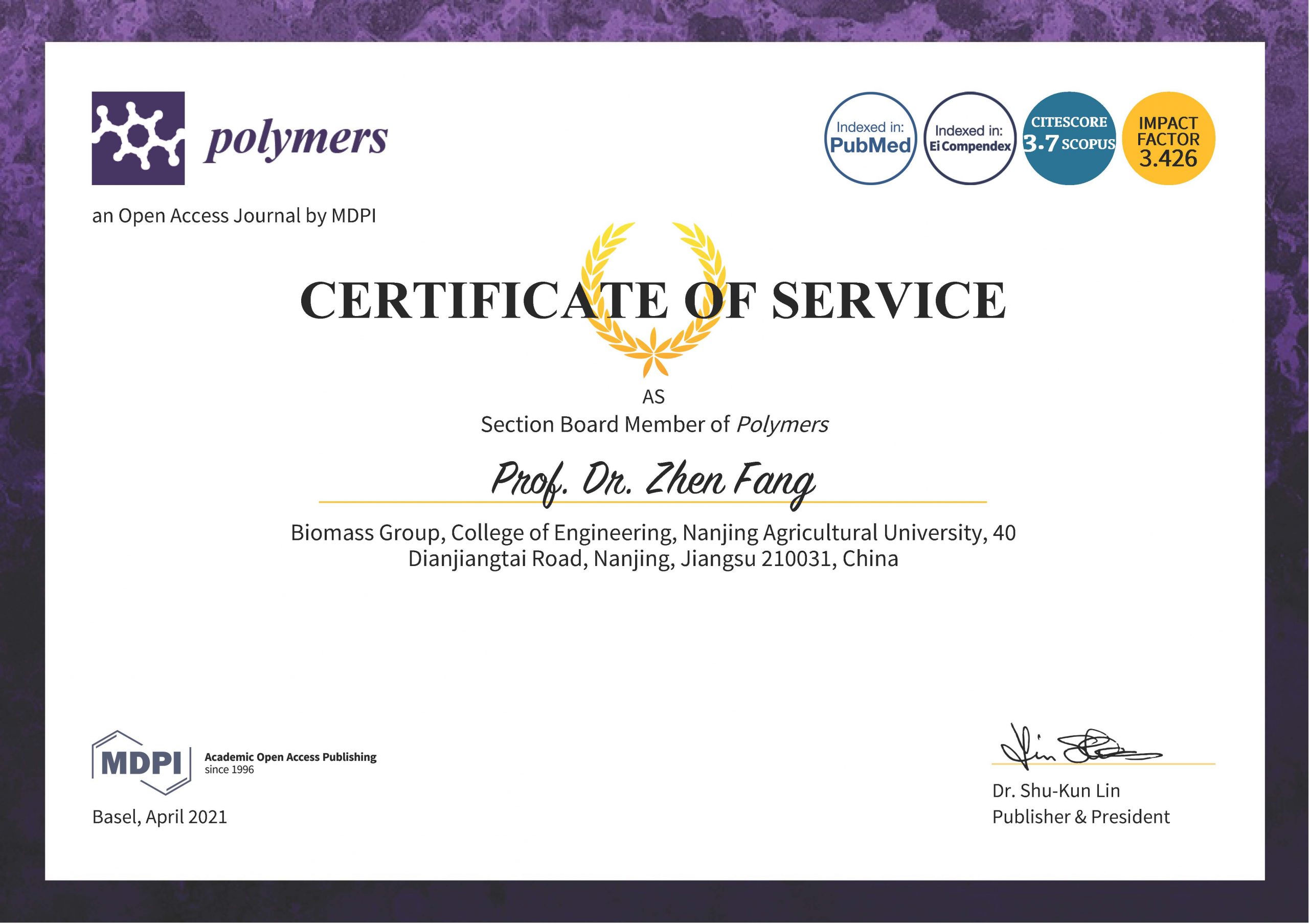
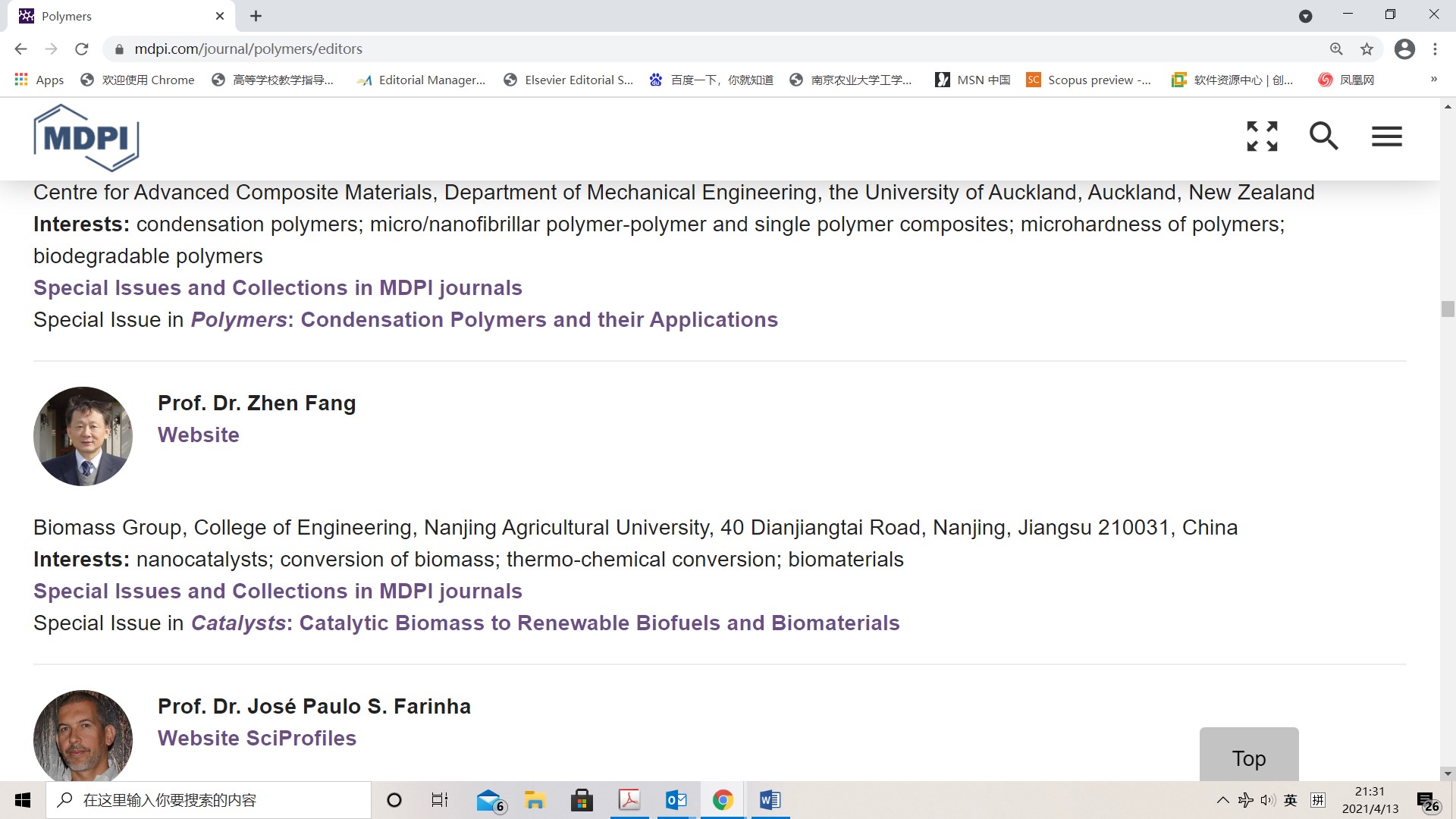
Posted in 未分类 | No Comments »
18 3 月, 2021
MOF-based functional catalytic materials for biodiesel production
Recently, PhD student Miss Wen-jie Cong supervised by Prof. Zhen Fang, collaborated with Profs. Hu Li at Guizhou Univ, JA Kozinski at Lakehead Univ and AK Dalai at U of Saskatchewan in Canada, published a review article in Green Chemistry about metal-organic framework-based functional catalytic materials for biodiesel production.
At present, the key point of the biodiesel industry is to find cheap and widely sourced feedstock to reduce production costs. High-efficiency heterogeneous catalyst can enhance biodiesel yield from low-quality feedstocks. Metal-organic frameworks (MOFs) have attracted extensive attention in the field of clean energy and chemicals due to their porous, controllable structure and good compatibility. However, the application of MOF materials on biodiesel production is still in its infancy but their usage is on the rise year by year. There is no relevant review article to summarize and point out the work and defects in this field. This review focuses on MOF-based functional catalytic materials for biodiesel production. Catalytic performance of MOF-based catalysts, synthesis method and catalytic loading strategy are described in detail. This review also analyzes the mechanism of functionalized MOFs classified via enzyme, base, acid, and bifunctional catalysts and summarizes technologies employing MOF-based catalysts for biodiesel production. Additionally, technical perspectives on the feasible reaction mechanisms are discussed, and the realistic necessity of MOF-based nanocatalysts is provided. The MOF-based functional catalytic materials show great potential in biodiesel production and other relevant biorefineries.
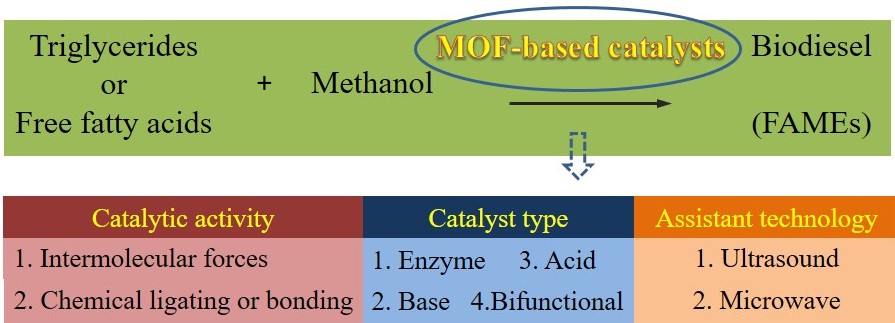
Porous MOF-based nanocatalysts prepared by assembly of organic ligands and metal ions functionalized with acid/ base/ enzyme used for biodiesel production (酸/碱/酶功能化金属离子与有机配体组装制备多孔MOF基纳米催化剂用于生物柴油生产)
Related results were accepted in Green Chemistry:
Wen-Jie Cong, Sonil Nanda, Hu Li, Zhen Fang*, Ajay K. Dalai, Janusz A. Kozinski. Metal-organic framework-based functional catalytic materials for biodiesel production: A review. Green Chemistry, 23, 2595–2618, (2021). https://doi.org/10.1039/D1GC00233C.
(更多…)
Posted in 未分类 | No Comments »
3 2 月, 2021
Diamond Anvil Cell System
Prof. Zhen Fang studied quantitative (visual and microscopic) assessment of the behavior of biomass and plastics in supercritical water (SCW) and designed unique diamond anvil cell (DAC) system in Canada (McGill), leading to the invention of “fast hydrolysis process”.
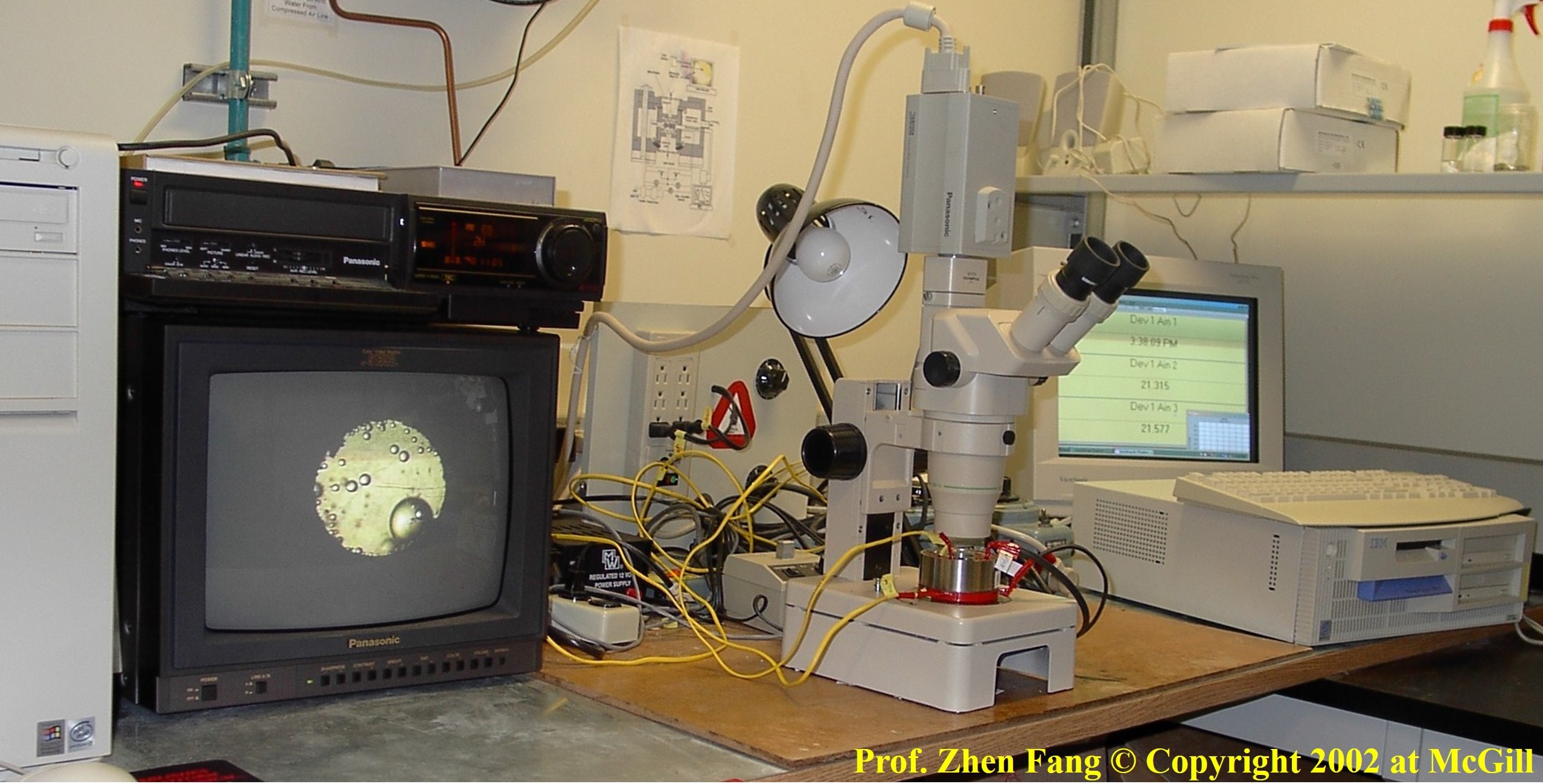


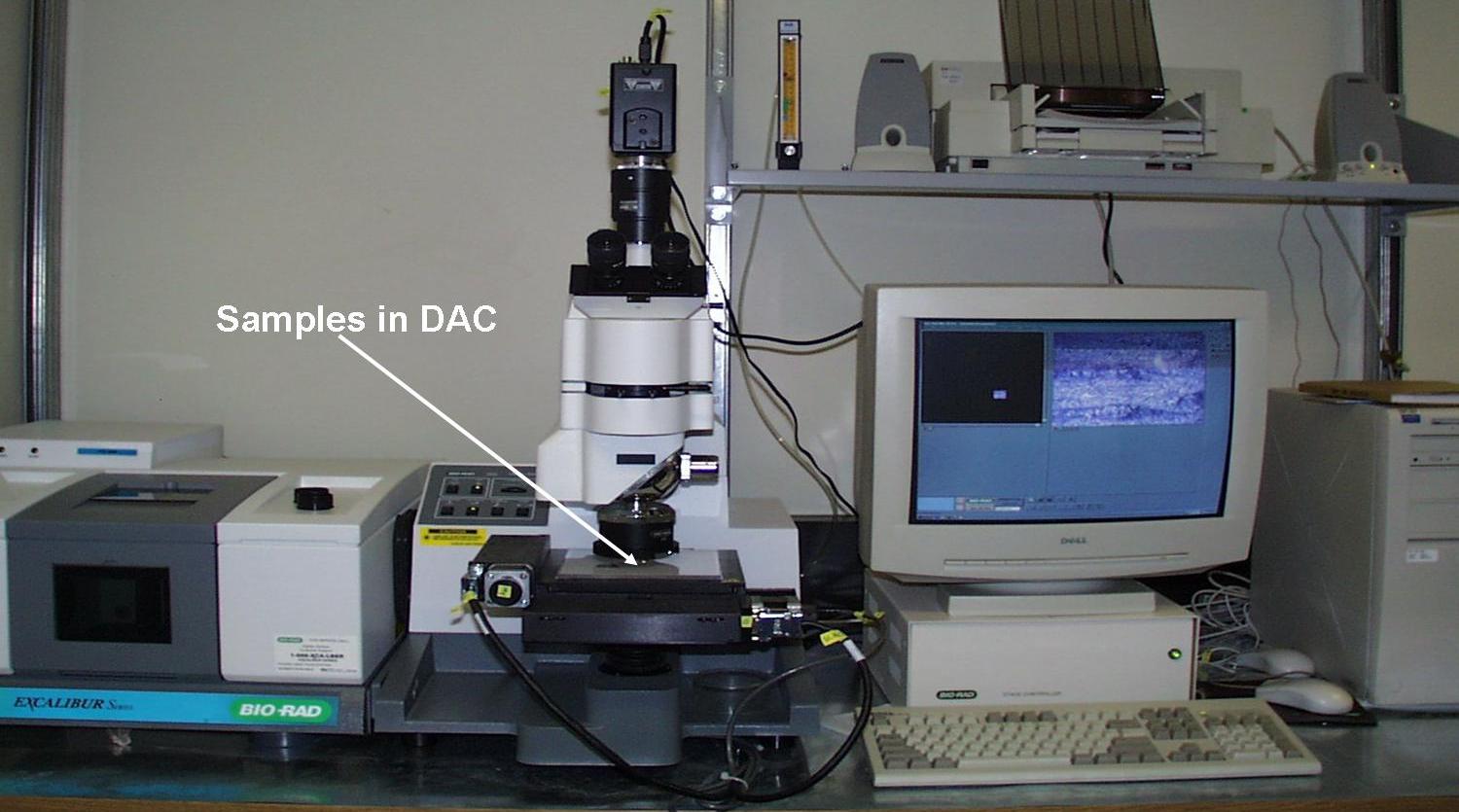
Prof. Zhen Fang further studied one-pot and low-temperature synthesis of liquid biofuels and chemicals from carbohydrates (Nat Commun; 2 PCT, 2 patents). This unique process almost completely converts lignocelluloses, after hydrolysis and decomposition, to imides and liquid fuels (2,5-dimethylfuran, methyl levulinate, gamma valerolactone, methylfuran).
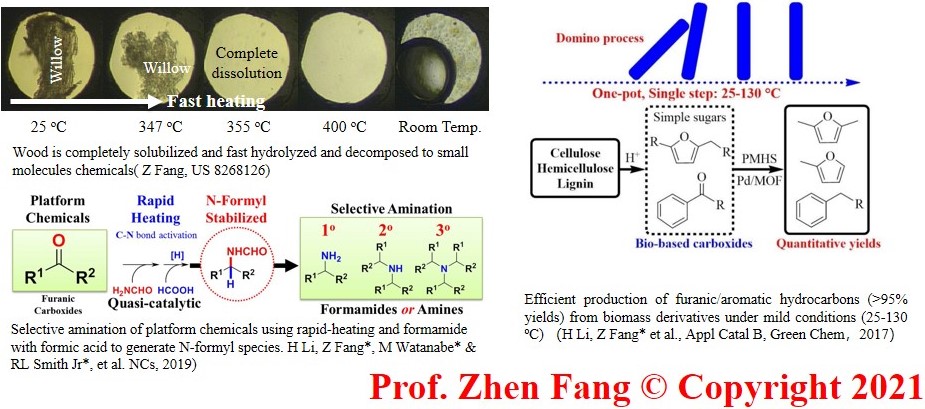
Posted in 未分类 | No Comments »
3 2 月, 2021
Prof. Zhen Fang was appointed as Member of the Academic Degree Committee of the State Council of China (2020-2025).
国务院学位委员会第八届学科评议组成员名单:
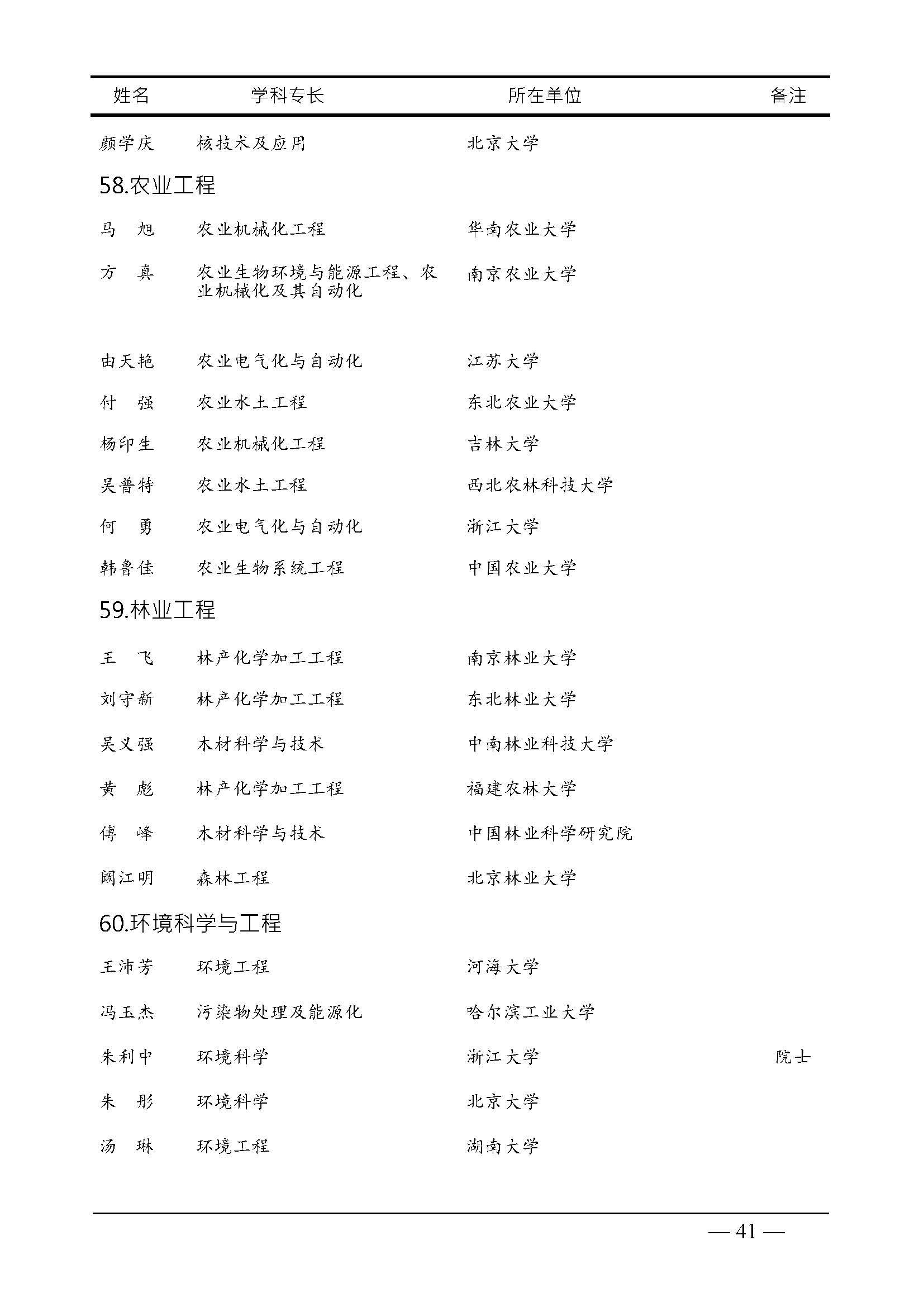
Posted in 未分类 | No Comments »
10 1 月, 2021
国际会议Prof. Zhen Fang attended the Int’l Symp. on Technology & Equipment of Biomass Utilization
On December 27, 2020, Prof. attended the Int’l Symp. on Technology & Equipment of Biomass Utilization organized by Nanjing Agricultural University and Jiangsu Energy Research Society (JERS). Prof. Zhen Fang chaired keynote section with 3 excellent presentations given:
- Chunbao (Charles) XU on Hydrothermal Conversion of Wet Biomass into Bioenergy, Western University (Canada);
- Richard L. SMITH on Opportunities for Biomass Utilization with Hydrothermal and Solvothermal Methods, Tohoku University (Japan);
- Mingjie JIN on Bioconversion of Lignocellulosic Biomass for Fuels and Chemicals production, Nanjing University of Science & Technology (China)
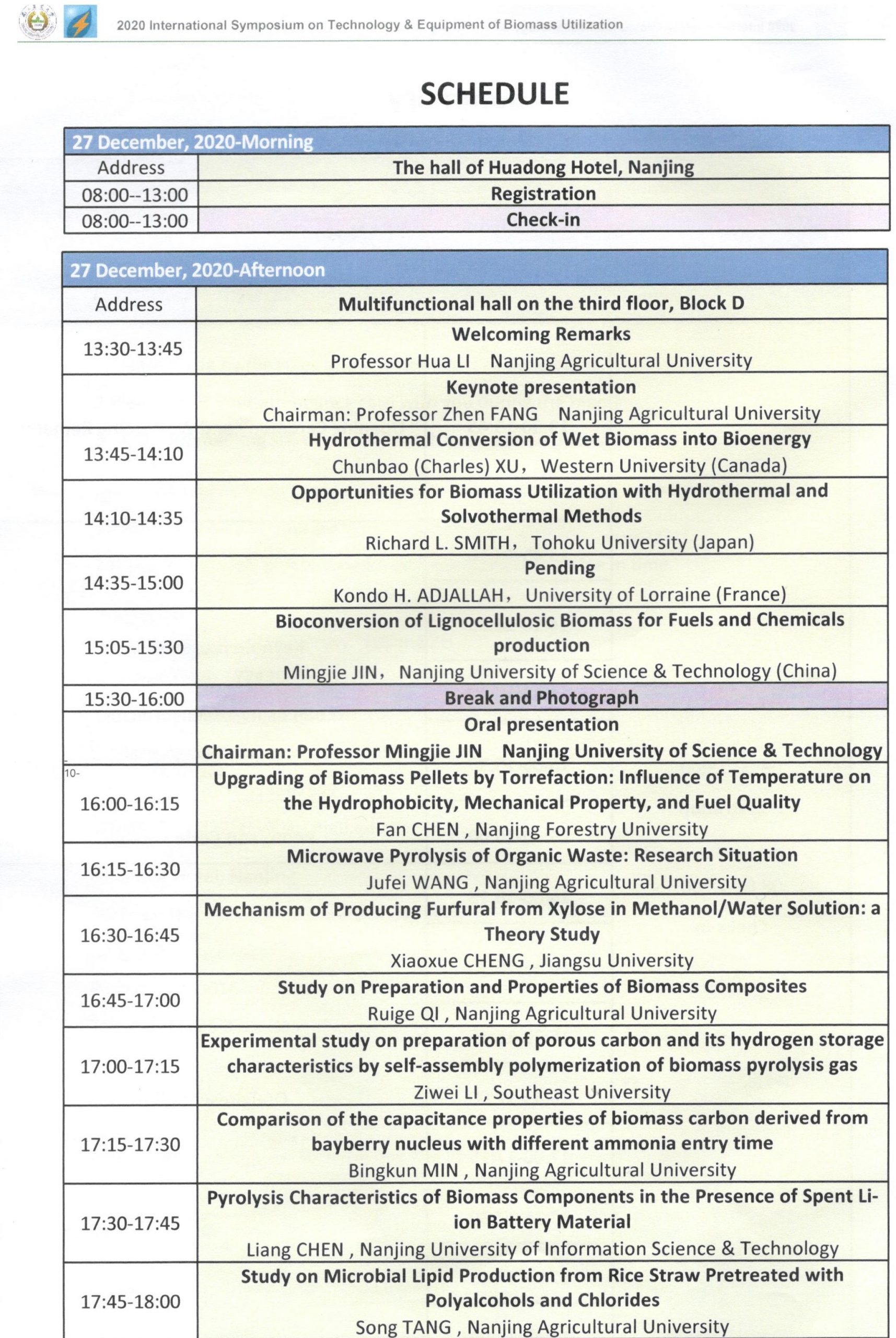
方老师出席国际研讨会“生物质利用技术与设备”
2020年12月27日,方老师出席了由南京农业大学与江苏省能源研究会组织的“生物质利用技术与装备研究”国际研讨会。方老师主持了主题演讲部分, 三位 教授做了精彩的演讲:
- 徐春宝教授 “湿生物质水热转化为生物能的研究”, 西部大学(加拿大);
- Richard L.SMITH教授 “水热法和溶剂热法利用生物质的机会”,东北大学(日本);
- 金明杰教授,“木质纤维素生物质生物转化用于燃料和化学品生产”,南京理工大学(中国)。
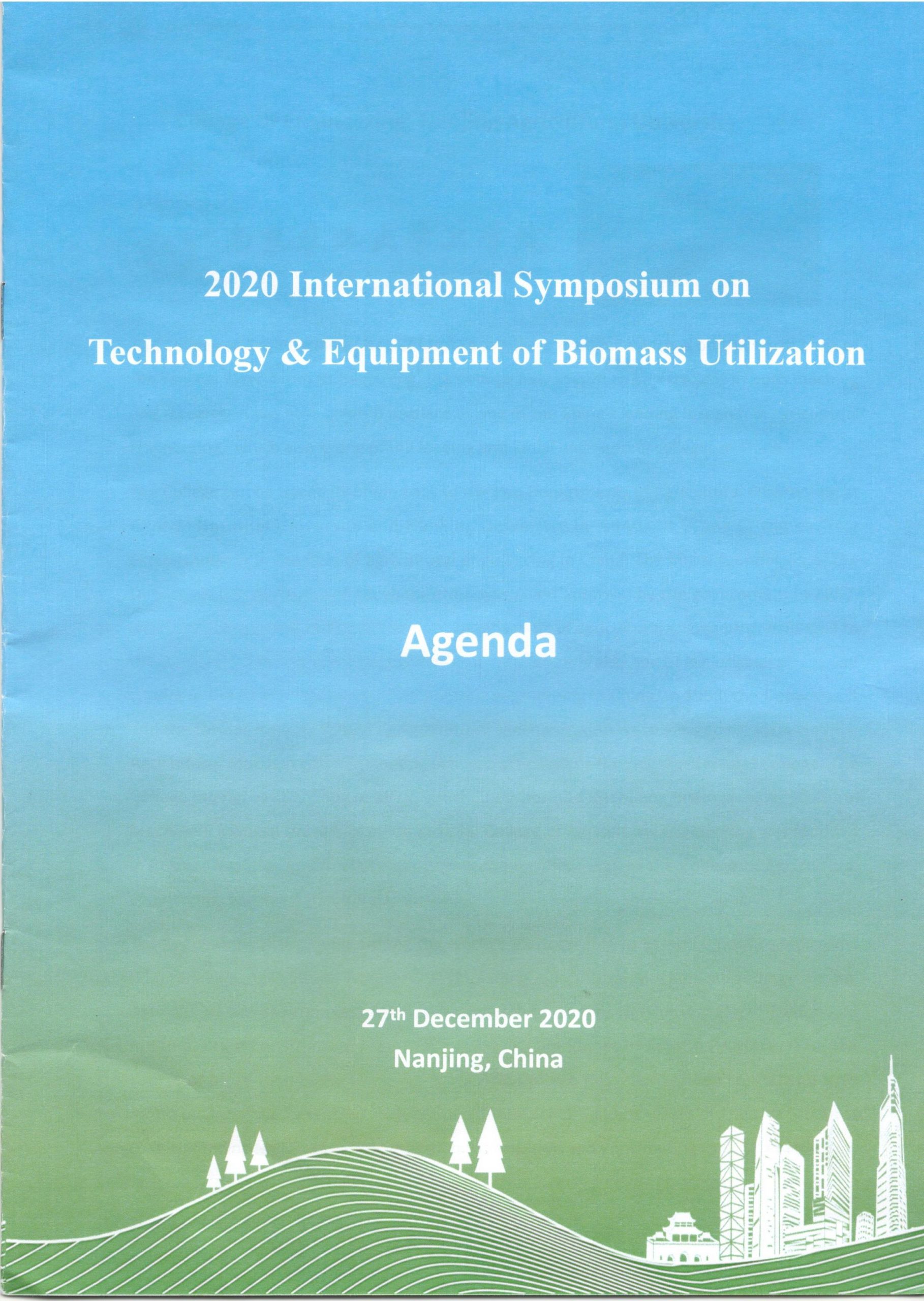
Posted in 未分类 | No Comments »










